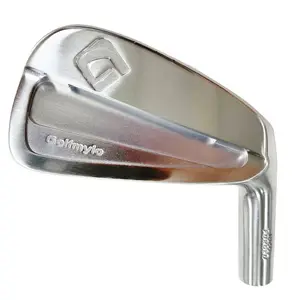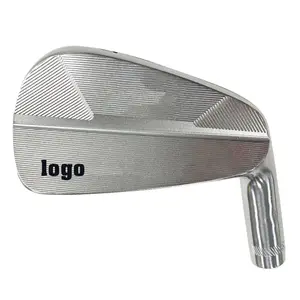Popular in your industry

































































Related Searches:






































































































































Top categories
About bike storage rack for garage
A bike storage rack for garage is a vital piece of equipment for both cycling aficionados and commercial entities, crafted to offer a secure and compact solution for bicycle storage. Available in a variety of materials including PP, steel, aluminum, alloy, and stainless steel, these racks are built for endurance and stability. They can be customized to individual specifications, with OEM and ODM services available to accommodate particular storage demands and tastes.
Types and Characteristics of Bike Storage Racks
On offer is a wide assortment of bike storage racks for garage, each engineered to suit distinct requirements and spatial constraints. Wall-mounted racks are favored for their ability to conserve space, permitting bikes to be stowed vertically or horizontally. Freestanding racks are the go-to for those valuing mobility and straightforward assembly, as they require no installation. Ceiling-mounted racks excel in capitalizing on otherwise unused overhead areas, keeping bicycles aloof, while pulley systems simplify the task of raising and lowering cycles. Gravity stands, which rely on the bicycle's own heft for support, are an optimal choice for those who prefer a setup that eschews installation. Each rack variant is conceived with particular scenarios in mind, ensuring a fitting storage solution for every cyclist and business necessity.
Structure and Operation of Bike Storage Racks
The architecture of a bike storage rack for garage is designed with a focus on sturdiness and accessibility. Wall-mounted models often incorporate a set of arms or hooks that securely embrace the bike's frame or wheels, frequently cushioned to avert scratches. Freestanding variants might feature a robust base with slots or indentations for bikes to stand erect. Ceiling racks employ a steadfast mounting system coupled with a pulley apparatus that facilitates the elevation and stowage of bicycles. Each element, from the fastening devices to the bike supports, is meticulously crafted to guarantee that bicycles are stored firmly and can be retrieved with ease, all while preventing damage or the need for undue exertion.
Materials and Properties
Selecting the right materials for bike storage racks for garage is paramount to ensure longevity and practicality. Steel is prized for its formidable tensile strength, capable of bearing considerable loads, thus perfect for heavy-duty use. Aluminum is selected for its featherweight nature and immunity to corrosion, an advantage in moist garage settings. Stainless steel is utilized for its polished look and rust-resistant characteristics, promising durability with minimal upkeep. Polypropylene (PP) is chosen for its eco-friendliness and resilience to chemicals, oils, and fatigue. Alloys are frequently employed to achieve an equilibrium between weight, robustness, and affordability. Each material is chosen with care to strike a balance between strength, endurance, and cost-efficiency, while also mindful of the product's environmental footprint.
Business Usages and Applications
Bike storage racks for garage are indispensable across a range of commercial applications. In retail environments, they facilitate spatial efficiency and display merchandise in an orderly fashion. Rental services employ these racks for neat storage and swift access, thereby enhancing customer experience. Within residential complexes, they afford inhabitants a secure and convenient locale for their bicycles, fostering an uncluttered setting. On corporate campuses, these racks incentivize employees to bike to work by providing secure storage solutions. In each scenario, the racks streamline operations, bolster safety, and advocate cycling as an eco-friendly transport option, thus generating business value and bolstering green initiatives.
Functions and Tasks
The principal role of a bike storage rack for garage is to safeguard bicycles and keep them elevated to deter theft, damage, and disorder. Advanced models may boast features such as adaptable arms to fit various bike sizes, integrated locks for enhanced security, and even repair stands for maintenance activities. The design of these racks typically takes into account the simplicity of loading and unloading, ensuring that bicycles can be stowed and accessed by users of all ages and capabilities without the necessity of lifting, which can pose a challenge for some riders.
Features and Unique Selling Points
Key attributes of bike storage racks for garage include their sturdy build, capable of supporting the heft of multiple bicycles, and their versatility to accommodate diverse bike models and dimensions. Some racks feature modular designs, permitting expansion in line with growing requirements. Distinctive selling points may encompass the ease of installation, with certain models obviating the need for tools, and novel security elements like integrated cable locks or compatibility with U-locks. These characteristics distinguish them in a competitive marketplace, offering consumers additional benefits and convenience.
Benefits and Positive Outcomes
Employing a bike storage rack for garage yields a multitude of advantages. It optimizes space, rendering the area orderly and passable. For businesses, it can augment the aesthetic appeal of their premises and shield their inventory from harm. For individuals, it offers the reassurance of knowing their bicycles are stored securely. Moreover, these racks can contribute to extending the lifespan of a bicycle by keeping it away from damp surfaces, thus mitigating the risk of rust and deterioration.
How to Use and Operate Effectively
To effectively utilize a bike storage rack for garage, it is crucial to adhere to the specific guidelines for loading and securing bicycles. For wall-mounted racks, it's important to balance the bike's weight evenly across the support points. For ceiling racks, it's essential to ensure the pulley system is locked before letting go of the bike. Proper usage not only secures the bicycle but also prevents potential harm to the garage or storage space.
How to Choose the Right Model
Choosing the appropriate bike storage rack for garage entails evaluating the number of bicycles to be housed, the space at hand, and the types of bikes. Factors to consider include the simplicity of installation, the material's resistance to environmental elements like humidity and temperature fluctuations, and the rack's compatibility with your bicycle's frame and wheel size. It's also wise to contemplate future requirements, such as the potential acquisition of additional or different types of bicycles.
How to Clean and Maintain
Upkeep of a bike storage rack for garage involves routine cleansing to eliminate dirt and debris, achievable with gentle soap and water. Regular inspections for signs of wear or damage, such as corrosion or loosened parts, are advised, with subsequent tightening or replacement as needed. For components with movement, like pulleys or adjustable arms, periodic lubrication may be necessary to maintain seamless functionality.
How to Install
Installing a bike storage rack for garage demands thoughtful planning and an understanding of the garage's layout. Wall-mounted racks must be anchored firmly into wall studs, while ceiling racks might necessitate extra supporting structures. Freestanding racks generally require assembly and placement on a flat surface. It is imperative to follow the manufacturer's instructions for a safe and stable setup.
Target Audience and Meeting Needs
The intended market for bike storage racks for garage is broad, encompassing residential homeowners aiming to declutter their garage space, commercial property managers in search of efficient bike storage solutions, and cycling retailers in need of display systems for their wares. These racks are crafted to satisfy the diverse needs of each demographic, offering secure, robust, and convenient bike storage options tailored to the specific requirements of different users.


























































